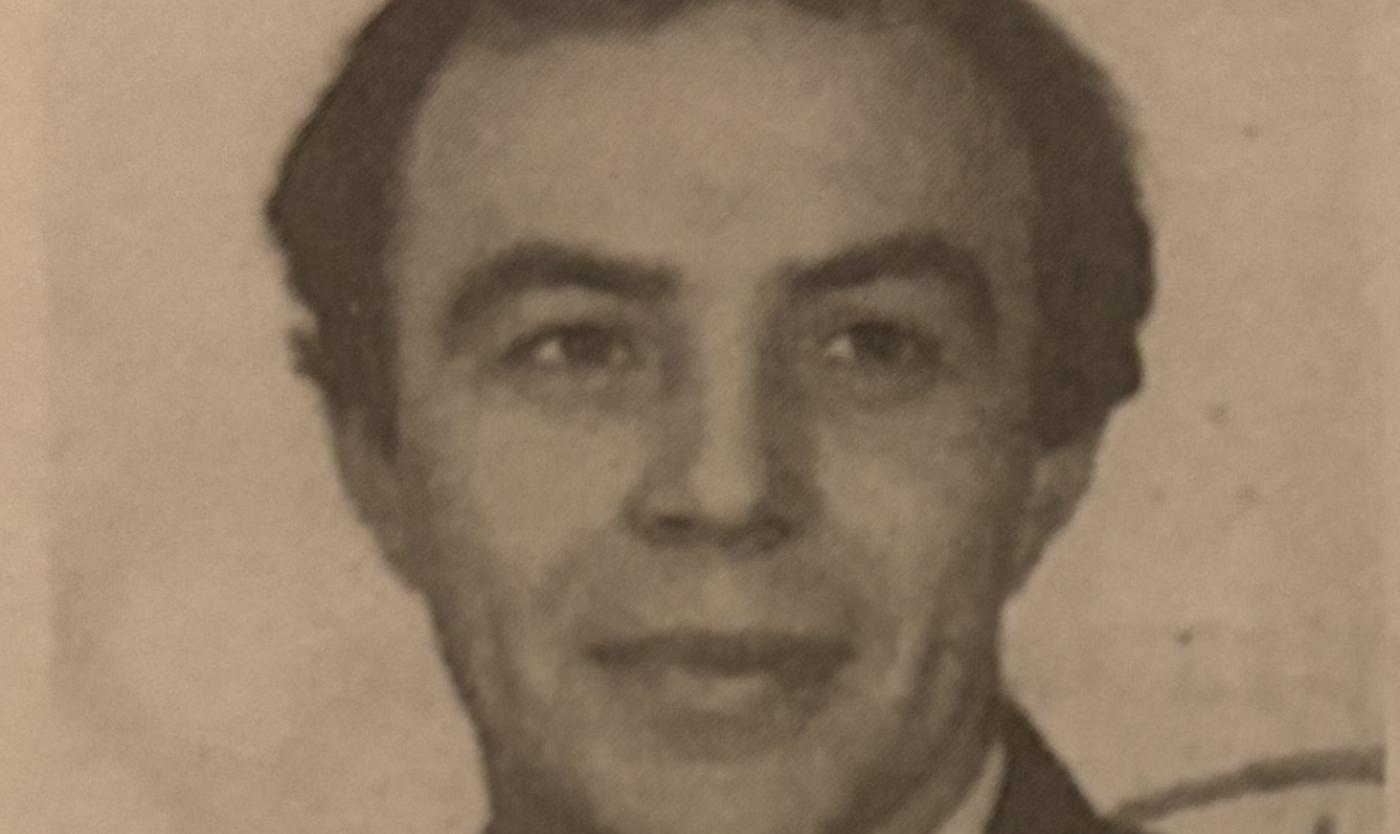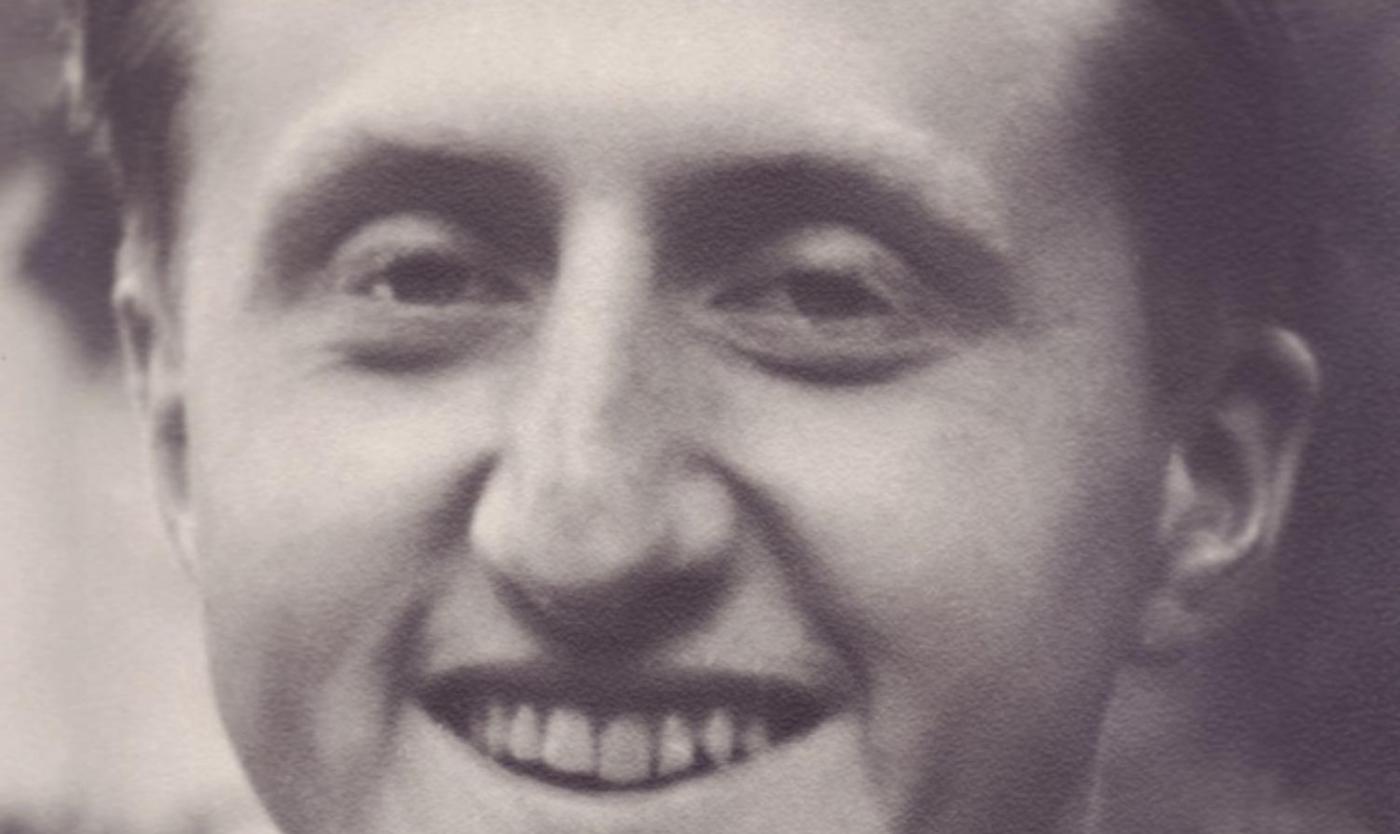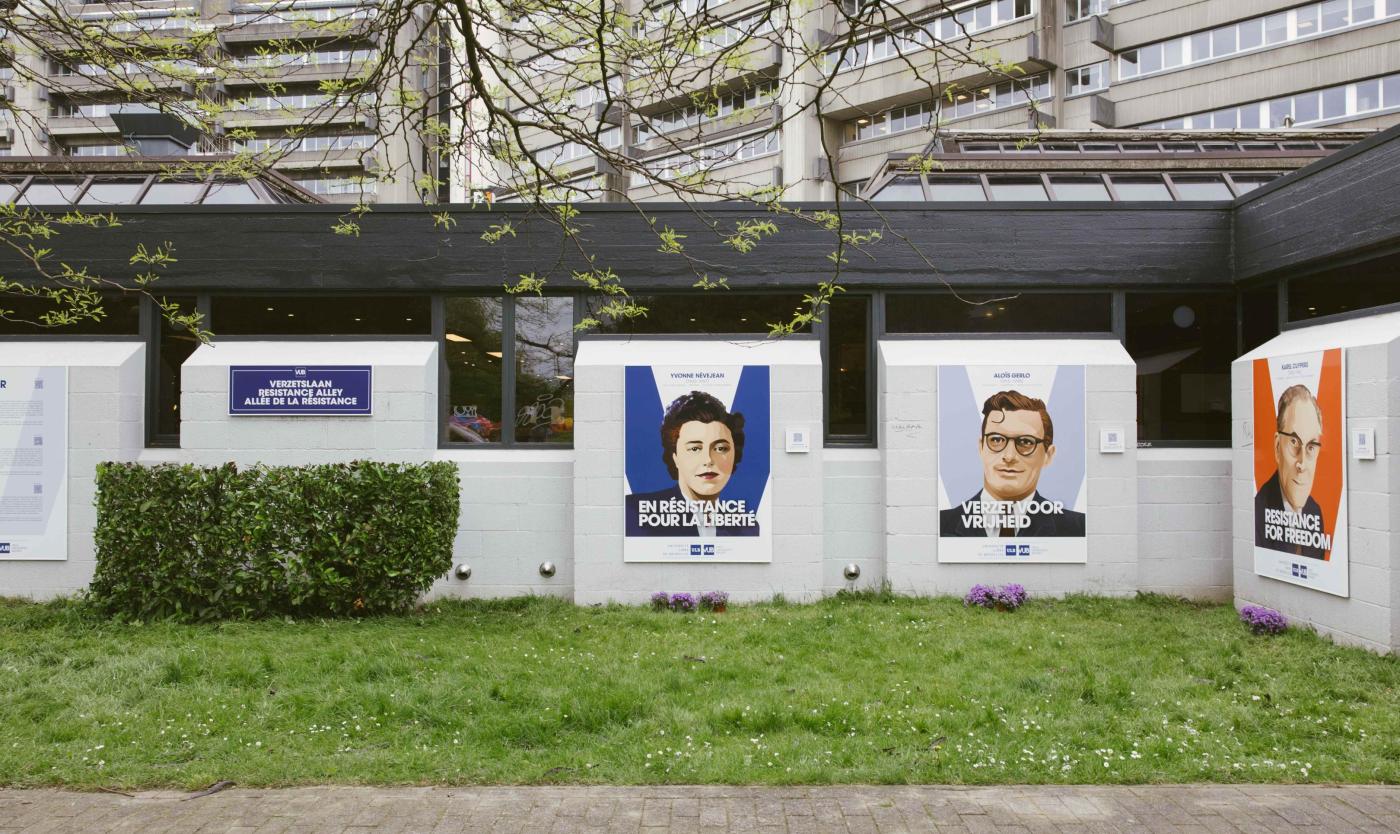
On Sunday, 16 February, 2025, the Soudal Brussels Universities Cyclocross will take place on the VUB and ULB campuses. Whether you watch the race live or on TV, you won’t miss the large banner on the Braem building, displaying the faces of three young men. These are the ULB students who, on 19 April 1943, cycled from Schaerbeek to Boortmeerbeek to stop a deportation train bound for Auschwitz-Birkenau. Historian Dany Neudt, co-founder of the ‘Traces of Resistance’ Chair, recounts their remarkable story below.
Written by historian Dany Neudt
On 19 April 1943, around 10:00 pm, the 20th deportation train slowly departed from Mechelen station. More than 1,600 desperate and terrified people, nearly all Jewish, were beginning their grim journey to the Auschwitz-Birkenau extermination camp in Poland. Cramped into cattle wagons in appalling conditions, each carriage held an average of 50 to 60 people. Food and water were scarce, and there was barely enough space to sit or move.
That same evening, three childhood friends and former ULB students—Youra Livchitz, Robert Maistriau, and Jean Franklemon—met at Meiser Square in Schaerbeek. They had become friends at the Atheneum of Uccle, a school known for its strong secular and anti-fascist values. No fewer than seventeen of its students and teachers would lose their lives as resistance fighters during the Second World War, eight of whom were executed by the occupiers. Among its notable alumni was Andrée Dumon, who played a crucial role in the Comet escape line and lived to the age of 102.
Their nerves were on edge as they prepared to carry out their audacious plan. Resistance comrade Richard Althenhoff, a leader of the Group G resistance network, arrived at the square. He handed a revolver to Youra before leaving. Armed with the revolver, wire cutters, and a red storm lamp, the three young men cycled through Steenokkerzeel and Kampenhout towards Boortmeerbeek.
“Today, it stands as one of Europe’s most daring and legendary acts of resistance”
Once in Boortmeerbeek, they abandoned their bicycles and took position on a curve where the train would slow down. They placed the red storm lamp on the tracks. According to railway regulations, all trains had to stop at a red light—and so it did. Despite the presence of SS guards, the trio managed to open the seventeenth wagon. Seventeen deportees escaped in Boortmeerbeek, with most taking a tram back to Brussels. Further along the railway line, in the chaos and excitement, more than 220 prisoners managed to flee before the train reached the Belgian border—a feat unmatched in Western Europe. Among them was VUB honorary doctor Simon Gronowski, now a sprightly 93-year-old, who continues to share his testimony across the country. Tragically, 25 escapees were shot on the spot, and 91 were recaptured. In the end, 121 people managed to escape deportation.
What became of our resistance heroes?

Jean Franklemon
Jean Franklemon
Jean Franklemon was arrested shortly after the successful rescue operation. He was deported as a ‘Nacht und Nebel’ (Night and Fog) prisoner to the concentration camps of Sonnenburg and Sachsenhausen. Surviving the death marches, he later settled near Frankfurt an der Oder, where he passed away in 1970.
Robert Maistriau
Robert Maistriau went into hiding in the Ardennes and continued his resistance work. He took part in the spectacular ‘La Grande Coupure’ sabotage operation with Group G, destroying nearly 30 high-voltage pylons and severely disrupting the German war economy. Arrested on 20 March 1944, he was deported via Fort Breendonk to Buchenwald concentration camp. He was freed on 15 April 1945 by American troops at Bergen-Belsen. In later years, he devoted himself to the cause of freedom and equality, passing away in 2008.

Robert Maistriau

Youra Livschitz
Youra Livschitz
A month after the Boortmeerbeek rescue, Youra Livchitz was arrested by the Gestapo. In a daring escape, he overpowered his guard, donned his uniform, and walked out of Gestapo headquarters. He and his brother Alexandre planned to flee to England, but their escape vehicle was intercepted after a betrayal. Alexandre was imprisoned and tortured at Fort Breendonk before being transferred to Saint-Gilles Prison. He was executed in Schaerbeek on 10 February 1944. Youra endured the ‘Hell of Breendonk’ from 26 June 1943 until his execution on 17 February 1944, along with five fellow resistance fighters.
In the spring of 1944, Rachel Livchitz-Mitchnik read two heartbreaking farewell letters from her sons, Alexandre (Choura) and Youra. Written just before their execution, Alexandre’s words spoke of facing his fate ‘with head held high and a clear conscience’. Barely a week later, Youra wrote that he wished he could have been with her ‘to work together in the new reality’. Their comrades who survived continued to visit Rachel until her passing at the age of 93.
For decades, the rescue of the 20th deportation train was barely more than a historical footnote. Today, it is rightly recognised as one of the most audacious and legendary acts of resistance in Europe. Nowhere else in Western Europe did resistance fighters succeed in halting a deportation train—let alone helping so many people escape.
Would you like to learn more about the deportation trains and the resistance during the Second World War? Be sure to visit the website of Kazerne Dossin.
Chair Traces of the Resistance
The VUB Chair in Traces of Resistance keeps the memory of Belgian resistance against the Nazi occupier alive. Through academic research, citizen science, and public initiatives, the chair sheds new light on the stories of resistance fighters. In collaboration with Helden van het Verzet and other partners, VUB is committed to fostering a strong social dialogue on resistance, freedom, and democracy.
